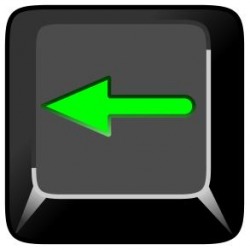Objectives

Objectives are clearly stated specific statements about what staff intend an individual will learn during a session. Objectives should be:
- suited to the Learner's stage of development;
- well ordered (each progresses to the next);
- objective and observable (not open to subjective interpretations);
- realistic and obtainable;
- devised from, and consistent with, the Learner target that has been
set.
The objectives below are not meant to be definitive for any Learner but, rather, a generic initial set that may be adopted, adapted or rejected as is necessary.
Some Learners may require smaller intervening steps because of the nature of their cognitive condition. Therefore, some establishments may prefer to organise such objectives into subsets: for example, they may have Objective 6a, 6b, 6c and 6d (etc) as follows:
Objective 06:
The Learner will activate the switch once for each POLE event
6a: with physical assistance
6b: with verbal prompt
6c: with laser pen prompt
6d: independent achievement
Some establishments colour code such objective differentiation and chart the objectives such that it is easier to see, at a glance, what progress a Learner is making. While there is no one right methodology for detailing objectives, it is important to realise that only 6D is an achievement of the objective and others are merely possible stepping stones on the route. Objectives should not typically make claim to assumed 'understanding' on behalf of the Learner but, rather, maintain an objective stance using purely observable behaviours. 'John will understand that ...' or 'Jenny will be happy to ...' are not good objectives as they rely on subjective interpretations from staff. An objective is a quantifiable statement: as staff observe the Learner performing such an action indepently, they can tick it on a list. 'John will touch the screen' is a quantifiable action: either John touched the screen or he didn't. If he reached out and attempted it but failed to touch the screen then John did NOT achieve the stated objective. Perhaps a new prior objective could be written to allow for John's efforts: 'John will reach out his hand in an attempt to touch the screen'. Such an objective would have been achieved (and thus ticked off the list by staff) by John's actions. However, it still leaves the original objective for John to master. If we are dealing with touch screen computers, for example, an attempt to touch the screen will not operate a program: only an actual touching will work.
Generally, each action should be observed at least three times by more than one member of staff. Note: The DatabridgeMIS system is a recommended staff tool that can assist the tracking of set objectives across the curriculum.
The objectives are listed below. If you feel that there are any missing or that this list should be amended in some way, please use the form at the bottom of the switching page to make contact.
- suited to the Learner's stage of development;
- well ordered (each progresses to the next);
- objective and observable (not open to subjective interpretations);
- realistic and obtainable;
- devised from, and consistent with, the Learner target that has been
set.
The objectives below are not meant to be definitive for any Learner but, rather, a generic initial set that may be adopted, adapted or rejected as is necessary.
Some Learners may require smaller intervening steps because of the nature of their cognitive condition. Therefore, some establishments may prefer to organise such objectives into subsets: for example, they may have Objective 6a, 6b, 6c and 6d (etc) as follows:
Objective 06:
The Learner will activate the switch once for each POLE event
6a: with physical assistance
6b: with verbal prompt
6c: with laser pen prompt
6d: independent achievement
Some establishments colour code such objective differentiation and chart the objectives such that it is easier to see, at a glance, what progress a Learner is making. While there is no one right methodology for detailing objectives, it is important to realise that only 6D is an achievement of the objective and others are merely possible stepping stones on the route. Objectives should not typically make claim to assumed 'understanding' on behalf of the Learner but, rather, maintain an objective stance using purely observable behaviours. 'John will understand that ...' or 'Jenny will be happy to ...' are not good objectives as they rely on subjective interpretations from staff. An objective is a quantifiable statement: as staff observe the Learner performing such an action indepently, they can tick it on a list. 'John will touch the screen' is a quantifiable action: either John touched the screen or he didn't. If he reached out and attempted it but failed to touch the screen then John did NOT achieve the stated objective. Perhaps a new prior objective could be written to allow for John's efforts: 'John will reach out his hand in an attempt to touch the screen'. Such an objective would have been achieved (and thus ticked off the list by staff) by John's actions. However, it still leaves the original objective for John to master. If we are dealing with touch screen computers, for example, an attempt to touch the screen will not operate a program: only an actual touching will work.
Generally, each action should be observed at least three times by more than one member of staff. Note: The DatabridgeMIS system is a recommended staff tool that can assist the tracking of set objectives across the curriculum.
The objectives are listed below. If you feel that there are any missing or that this list should be amended in some way, please use the form at the bottom of the switching page to make contact.
Objective 01: The Learner will look at the switch when it is presented.
Objective 02: The Learner will tolerate the switch in his/her personal space.
Objective 03: The Learner will reach out and attempt to touch the switch;
Objective 04: The Learner is able to activate the switch (to create an effect).
Objective 05: The Learner will remove his/her hand (other) from the switch after activation is made.
Objective 06: The Learner will activate the switch once for each POLE event.
Objective 07: The Learner activates the switch only when the POLE event has terminated.
Objective 08: The Learner continues in the attempt to reach the switch and then ceases when the switch
is activated and the POLE event is enabled.
Objective 09: The Learner demonstrates awareness of Cause and Effect consistently over X days,
in Y environments with Z different POLE Events.
Objective 10: The Learner will activates the switch within X seconds of being instructed by a Significant Other
Objective 11: The Learner will activate the switch appropriately in response to an automatic scanning
mechanism (to indicate a blind choice)
Objective 12: The Learner will operate the switch in response to an anticipation of a POLE event.
Objective 13: The Learner will ignore a Null Switch placed on the periphery of the Learner’s personal
switch space.
Objective 14: The Learner will ignore a Null Switch as it approaches the position of the active switch.
Objective 15: The Learner will continue to operate the active switch when it is moved from its normal position.
Objective 16: Given the choice of both symbolised Active and Null switches, the Learner will continue
to operate the Active Switch.
Objective 17: The Learner will select the correct response from a choice of two when working with a
‘blind’ facilitator over X days.
Objective 18: The Learner will select the correct response from a choice of three when working with a
‘blind’ facilitator over X days.
Objective 19: The Learner will select the correct response from a choice of four when working with a
‘blind’ facilitator over X days.
Objective 20: The Learner will select the ‘correct’ response from a 6-location (2x3) grid when working with a
‘blind’ facilitator.
Objective 21: The Learner will select the ‘correct’ response from an 8-location (2x4) grid when working with a
‘blind’ facilitator.
Objective 22: The Learner will select the correct symbol from his 8 location system when working with a
‘blind’ facilitator.
Objective 02: The Learner will tolerate the switch in his/her personal space.
Objective 03: The Learner will reach out and attempt to touch the switch;
Objective 04: The Learner is able to activate the switch (to create an effect).
Objective 05: The Learner will remove his/her hand (other) from the switch after activation is made.
Objective 06: The Learner will activate the switch once for each POLE event.
Objective 07: The Learner activates the switch only when the POLE event has terminated.
Objective 08: The Learner continues in the attempt to reach the switch and then ceases when the switch
is activated and the POLE event is enabled.
Objective 09: The Learner demonstrates awareness of Cause and Effect consistently over X days,
in Y environments with Z different POLE Events.
Objective 10: The Learner will activates the switch within X seconds of being instructed by a Significant Other
Objective 11: The Learner will activate the switch appropriately in response to an automatic scanning
mechanism (to indicate a blind choice)
Objective 12: The Learner will operate the switch in response to an anticipation of a POLE event.
Objective 13: The Learner will ignore a Null Switch placed on the periphery of the Learner’s personal
switch space.
Objective 14: The Learner will ignore a Null Switch as it approaches the position of the active switch.
Objective 15: The Learner will continue to operate the active switch when it is moved from its normal position.
Objective 16: Given the choice of both symbolised Active and Null switches, the Learner will continue
to operate the Active Switch.
Objective 17: The Learner will select the correct response from a choice of two when working with a
‘blind’ facilitator over X days.
Objective 18: The Learner will select the correct response from a choice of three when working with a
‘blind’ facilitator over X days.
Objective 19: The Learner will select the correct response from a choice of four when working with a
‘blind’ facilitator over X days.
Objective 20: The Learner will select the ‘correct’ response from a 6-location (2x3) grid when working with a
‘blind’ facilitator.
Objective 21: The Learner will select the ‘correct’ response from an 8-location (2x4) grid when working with a
‘blind’ facilitator.
Objective 22: The Learner will select the correct symbol from his 8 location system when working with a
‘blind’ facilitator.

